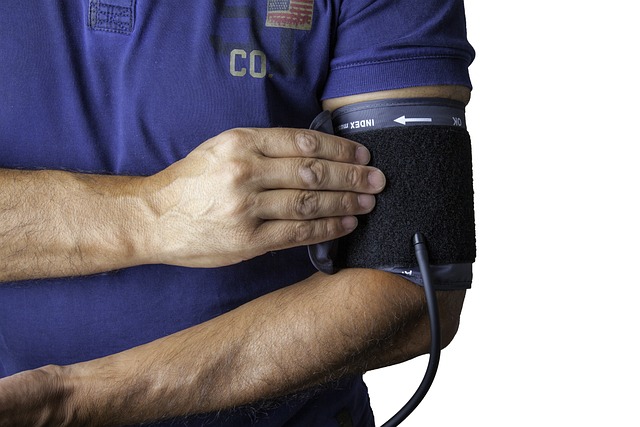Understanding symptom patterns to guide treatment decisions
Carefully tracking patterns of urination, nocturia, incontinence, and changes in voiding or flow helps clinicians and patients make informed treatment decisions for an enlarged prostate. Symptom trends over time clarify whether lifestyle change, medication, minimally invasive procedures, or surgery may be appropriate.

Recognizing patterns in urinary symptoms provides practical guidance for diagnosing and managing prostate enlargement. Observing the frequency and timing of urination, nocturia episodes, urgency, weak stream, or incontinence over weeks to months gives clinicians data to match treatment options to the underlying problem and its impact on daily life. Accurate symptom documentation supports screening and targeted diagnostic tests, and it helps monitor response when medication or procedures are started.
This article is for informational purposes only and should not be considered medical advice. Please consult a qualified healthcare professional for personalized guidance and treatment.
urology and diagnosis
A urology consultation typically begins with a detailed history and physical examination to link reported symptoms with probable causes. Clinicians commonly use symptom scores and questionnaires to quantify severity and bother. Initial tests may include urinalysis to rule out infection, measurement of post-void residual volume to assess incomplete emptying, uroflowmetry to record peak and average flow rates, and prostate sizing by ultrasound or digital rectal exam. These objective measures, taken alongside symptom patterns, inform decisions on whether further urodynamic testing or imaging is needed.
urination patterns and nocturia
Daytime frequency and nocturia (nighttime waking to urinate) often change before other signs appear. Nocturia can arise from bladder storage issues, increased urine production at night, or partial obstruction from the prostate. Tracking how many times a person wakes at night and whether they produce a large or small amount of urine helps distinguish causes. Simple behaviors—timing fluids and limiting caffeine or alcohol in the evening—can reduce symptoms for some, while a steady increase in nocturia may prompt further evaluation by a urologist.
incontinence, voiding, and flow
Incontinence types vary: stress incontinence (leakage with physical effort) is different from urgency incontinence (strong, sudden urge) and overflow incontinence (leakage due to incomplete emptying). Changes in voiding mechanics—hesitancy, intermittency, straining, or a weak flow—suggest possible obstruction or detrusor dysfunction. Objective tests like uroflowmetry and post-void residual measurement clarify whether poor flow results from mechanical blockage or bladder muscle weakness, which affects whether conservative care, medication, or procedural relief is prioritized.
obstruction: when to suspect it
Progressive reduction in urine flow, rising post-void residuals, recurrent urinary tract infections, bladder stones, or worsening renal function are red flags for obstructive effects of prostate enlargement. Acute urinary retention—sudden inability to pass urine—is a urologic emergency. When obstruction is suspected, imaging or urodynamic studies can quantify blockage and bladder response. The degree of obstruction guides treatment choices ranging from watchful waiting to procedures intended to relieve the physical blockage.
medication, minimally invasive, and surgery options
Treatment is matched to symptom pattern and clinical findings. Alpha-blockers can quickly reduce urinary symptoms by relaxing smooth muscle at the prostate and bladder neck, while 5-alpha-reductase inhibitors may shrink larger prostates over months and reduce progression risk. Minimally invasive procedures—performed though the urethra or with targeted ablation techniques—aim to improve flow with shorter recovery than open surgery. Conventional surgical options, such as transurethral resection or enucleation, remain effective for significant obstruction. Choice between medication, minimally invasive options, and surgery depends on symptom severity, prostate size, comorbidities, and the patient’s preferences about recovery and long-term outcomes.
lifestyle, diet, exercise, screening and follow-up
Nonmedical measures often accompany other therapies and can reduce symptom burden. Managing evening fluid intake, avoiding bladder irritants such as caffeine and alcohol, timing diuretic medications earlier in the day, and practicing bladder training can help with urgency and nocturia. Regular exercise and weight management support overall pelvic health and may indirectly improve urinary symptoms. Routine screening and periodic reassessment of symptom patterns and objective measures enable timely changes in management if symptoms progress or complications arise.
In conclusion, systematic observation of urinary symptom patterns—encompassing urination frequency, nocturia, incontinence, voiding characteristics, and flow—provides a clear framework for diagnosis, screening, and treatment decisions. Combining patient-reported trends with objective testing allows clinicians to recommend appropriate lifestyle measures, medication, minimally invasive procedures, or surgery and to monitor response over time.






